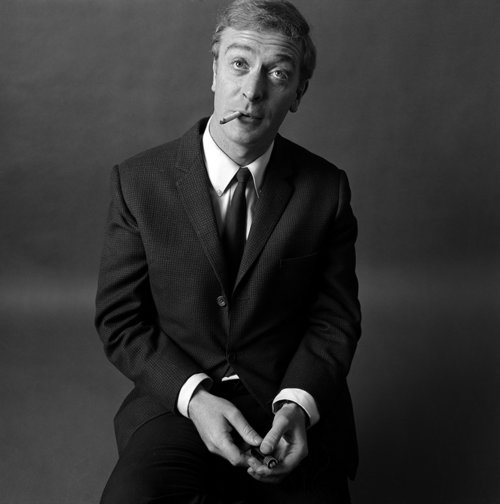The Mona Lisa of Pop: Brian Duffy's Collaborative Genius with David Bowie
Brian Duffy, London 1933 - 2010.
After graduating in fashion design, he worked for Vogue where he revolutionized fashion photography. Brian Duffy defined the image of the 60's. Together with David Bailey and Terence Donovan, he documented and contributed to the creation of the so-called “Swinging London,” a culture of fashion.
Duffy collaborated with David Bowie for many years and they made many projects together, including three LP covers where the most popular is Aladdin Sane, which came out in 1973 and this picture has been called for the Mona Lisa of pop. Brian Duffy´s work has been shown in several exhibitions, for example the National Portrait Gallery, London and in Tate, Liverpool. Brian Duffy was included in the list of Top 100, the most influential photographers of all time.
"Talking about a creative session is like talking about a boxing match." It happened because there was a little bit of magic in the room that night. I'll say it myself, it's a fucking great cover. " -Brian Duffy
Anarchist, painter, atheist, fashion illustrator, film producer, advertising director, photographer – Brian Duffy(1933-2010)was a blizzard of talent and contradictions.
© David Bailey
Selected artworks from the shop
David Bowie - Aladdin Sane, eyes closed
By Brian Duffy
David Bowie, Scary monster
By Brian Duffy
Love
By Brian Duffy
Michael Cain
By Brian Duffy
Fashion for Queen
By Brian Duffy
E-Type
By Brian Duffy
Fashion for Queen
By Brian Duffy
Jean Shrimpton
By Brian Duffy
Get in touch.
Interested in more details or our exclusive collections? Contact us via email for all your inquiries. Dive into the elegance of Brian Buffy’s photography with us!
MORE ABOUT BRIAN DUFFY
“I'll say it myself, it's a fucking great cover”
Fast-talking and controversial, he was also something of an enigma. Those involved in the media during the 1960s and 70s remember him as a cutting-edge fashion photographer, equal in stature to Terence Donovan and David Bailey – the three of them sharing Norman Parkinson’s soubriquet, ‘The Black Trinity’.Brian Duffy was born in 1933 to Irish immigrant parents, in the East end of London. He grew up in a heavily politicised household, both his parents were strict Catholics, and Duffy was brought up in a typical working-class family. At the age of twelve he was enrolled at an early version of a progressive school in South Kensington, run by the London County Council. Staffed by injured ex-servicemen it aimed, amongst other things, to introduce ‘problem children’ to the arts. Duffy was taken to art galleries, the opera, the ballet and museums, and soon after began to experiment with painting. In 1950, Duffy won a place at Central Saint Martin’s to study painting.He thrived in the school’s liberal environment and during this time met a number of significant figures in British art, including Frank Auerbach, Leon Kossof, Joe Tilson, and Len Deighton (who became a lifelong friend).He spent the majority of his three years at Saint Martin’s studying fashion design – which eventually gave him an edge as a fashion photographer. After college, Duffy took several jobs in the fashion industry, including working for Princess Margaret’s designer Victor Steibel and producing fashion drawings for Harper’s Bazaar, learning the business in the process and meeting the right people. He also began dabbling with photography and pursued internships in the field.By 1957 he had secured himself a contract with Vogue, after attracting the interest of the magazine’s art director, John Parsons. Charged at first with photographing everything and anything, Duffy found himself in the intoxicating creative environment of Vogue Studios, where he encountered some of the great photographers of the age. He worked closely with the models Jennifer Hocking, Pauline Stone, Joy Weston and Jean Shrimpton. It was during this time that Duffy befriended David Bailey and Terence Donovan, who were following similar career paths.The three re-defined the role of the photographer, and became as well known as the actors, models, musicians and members of royalty that they photographed. They also played a major part in developing the 1960s fashion aesthetic, sexualising the human body and capturing through photography the wider concerns of their generation. By 1963, Duffy was still under contract, but had moved into his own studios in Swiss Cottage where he began to develop a successful business of his own. In addition to Vogue, Duffy began to work for French magazine Elle.This arrangement suited Duffy well, and he preferred the atmosphere of Elle to that of its London rival – so much so that he almost completely transferred his commitment to the magazine after 1965. Although Duffy continued working for Elle until 1979, it was during the early 1960s that his work as a fashion photographer was most influential. During the Elle years, Duffy developed a significant reputation for commercial advertising photography from his London studios. In both 1965 and 1973 he was commissioned to shoot the famous Pirelli Calendar, and he worked closely with advertising agencies Collett Dickenson Pearce and Young & Rubican to produce award-winning commercials for Smirnoff and Benson & Hedges.In 1967, he set up a production company with his friend Len Deighton called Deighton Duffy. The company ran until 1971 and produced the film, Only When I Larf (1968) with David Hemmings and Richard Attenborough, and the musical, Oh! What A Lovely War(1969). He also continued to photograph for a variety of publications including The Sunday Times Magazine, Telegraph Magazine, The Observer, and Harper’s Bazaar.After many years in the industry, Duffy left the photography world behind, developing a dislike for the highly commercial, cut-throat advertising world. In a drastic move Duffy burnt the many negatives kept at his London studio, but thankfully, his neighbours objected to the acrid smoke, Duffy was forced to stop and the majority of his work was saved. The artist died in May 2010.












